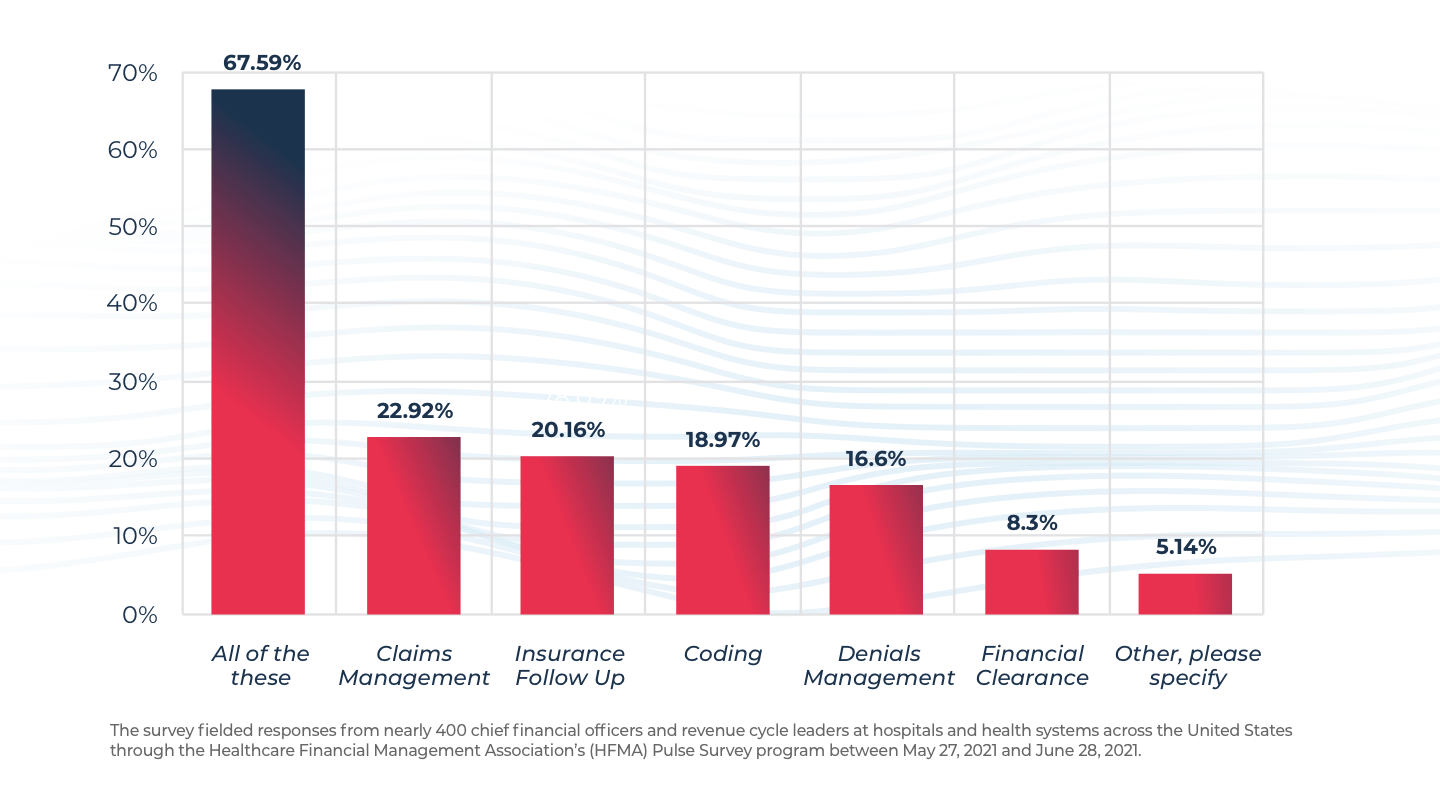Survey finds 84% of healthcare revenue cycle teams use productivity standards or quotas to meet goals
September 15, 2021 — South San Francisco, Calif. — AKASA™, the only Unified Automation™ company for healthcare revenue cycle management, today released a report titled, “New Productivity Benchmarks For The Healthcare Revenue Cycle.” The report includes the first-ever publication of the average time it takes health system staff to complete critical tasks within revenue cycle operations based on AKASA’s proprietary data. These benchmarks are some of the first for the revenue cycle industry and accurately forecast how to measure productivity for tasks within focus areas, like financial clearance, billing, and denials.
Nearly 84% of healthcare revenue cycle teams say they use productivity standards or quotas to meet goals, according to a recent AKASA survey of healthcare financial leaders. Of those who indicated using productivity measures, nearly 70% report scaling these across all focus areas within the revenue cycle, including claims management, insurance follow-up, coding, denials management, and financial clearance.
Commissioned by AKASA, the survey fielded responses from nearly 400 chief financial officers and revenue cycle leaders at hospitals and health systems across the United States through the Healthcare Financial Management Association’s (HFMA) Pulse Survey program between May 27, 2021 and June 28, 2021. The national survey was designed to assess the adoption of automation in revenue cycle operations at hospitals and health systems across the U.S.
“It’s challenging for healthcare revenue cycle leaders to access accurate benchmarks in terms of actual staff productivity,” said Amy Raymond, head of revenue cycle operations at AKASA. “You often can’t pull productivity metrics on someone working eligibility, for example, because it often gets mixed in with other things that they’re doing at the same time. With AKASA’s new report, leaders can fill in the information gaps and identify a reasonable number of claims or tasks to be worked daily. These benchmarks will also help managers set goals and forecast their staffing and resource needs.”
Healthcare organizations are investing in automation solutions for time-consuming, repetitive, and laborious tasks that are necessary but are often a less strategic use of staff time and talent. This can help organizations improve retention in revenue cycle positions, known for high rates of turnover.
“By leveraging automation, leaders can have their employees focus on more complex responsibilities and roles, allowing them to work at the top of their skillset and develop specialized teams that focus on patient-facing roles (such as financial counseling) that improve the overall patient financial experience,” said Malinka Walaliyadde, co-founder and CEO of AKASA.
Does your revenue cycle operations team use productivity standards or quotas to meet productivity goals?

In which of the following areas of the revenue cycle are productivity standards or quotas used?

AKASA works with hospital, health system, and specialty clinic customers of all sizes (with operations in all 50 states) to automate revenue cycle functions. Our proprietary software documents hundreds of millions of instances of computer-based tasks that staff perform manually within EHRs and other billing systems. This provides valuable insights for health systems into where their staff spend their time and what baseline costs are involved. AKASA’s “New Productivity Benchmarks For The Healthcare Revenue Cycle” is based on this proprietary data and informed by the expertise and experience of our team. You can download the report for free here.
About AKASA
At AKASA, we believe every dollar spent on healthcare matters because healthcare matters to everyone. The only Unified Automation™ company for healthcare, AKASA uses the same machine learning approaches that made driverless cars possible to provide health systems with a single solution for automating revenue cycle operations. AKASA’s unique expert-in-the-loop approach, Unified Automation, combines modern machine-learning with human judgment and subject matter expertise to provide robust and resilient automation. Unified Automation™ adapts to the highly dynamic nature of revenue cycle operations and has been purpose-built for healthcare. AKASA enables health systems to decrease their cost to collect so they can invest more in patient care and be better stewards of the healthcare dollar. AKASA is based in the heart of Silicon Valley. Learn more at www.AKASA.com.

